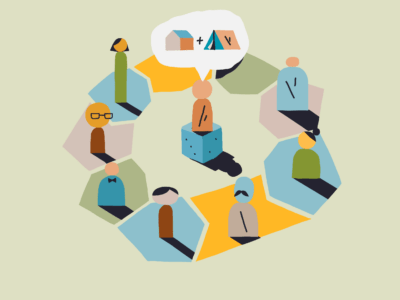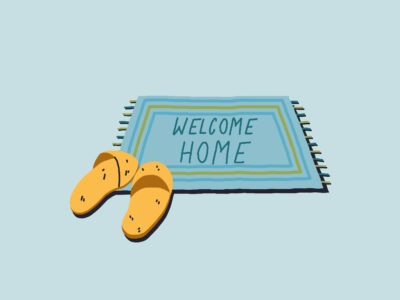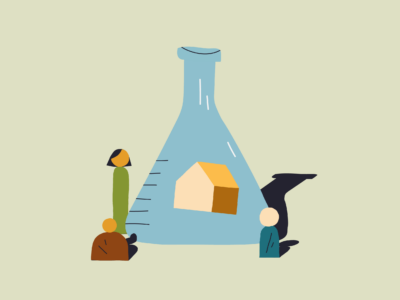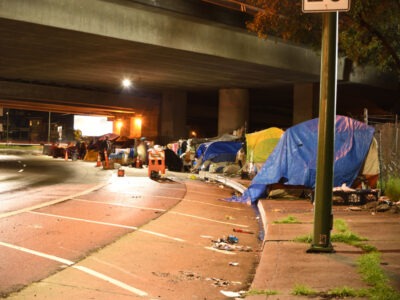Think of our current housing system as a game of musical chairs. There are more people than affordable homes. Just as not everyone can get a chair when the music stops, in our present situation, not everyone can get a home. Those who struggle the most, because of a disability, low wages, or other challenges, are most likely to lose. Even those who work hard to improve their situation can lose their home due to things they can’t control.
Systems are designed by people — and they can be redesigned to better serve people.
But imagine if we changed the rules, adding more chairs instead of taking them away, and helping people to find an open chair by removing obstacles in their way. We allow people to stay in the game, even when they are struggling, and create a situation where everyone is able to win.
Systems are designed by people — and they can be redesigned to better serve people.
Through Built for Zero, we support 132 communities in changing minds and systems to ensure everyone has a home. We work directly with 105 communities and support others through our international work and partner-led programs. Across this broad cross-section of communities, we are demonstrating that places of varying geographies, sizes, and political leanings can create housing systems to quickly identify and house anyone experiencing homelessness.
No single organization — or sector — can solve homelessness. Community Solutions acts as a “field catalyst” that supports communities and creates the broader conditions needed to propel the field up and over a tipping point. This includes bringing together partners like the ones below to drive policy and practice changes at the local, regional, state, and federal levels. It also requires partnering across sectors — public and private, health systems, corrections, child welfare, housing, etc. — to support the broader movement.
Partners in the movement to solve homelessness
INTERNATIONAL
- Backbone organizations for national movements to solve homelessness
NATIONAL
- Charitable foundations and philanthropy
- Data and technology companies
- Health system and public health partners
- Field catalysts
- Federal partners (executive and legislative branches)
- Housing and homelessness organizations
- Philanthropic foundations
REGIONAL / STATE
- Entities coordinating regional homeless response
- Governors’ offices
- Health care systems
- State and regional human service and public health agencies
- State housing agencies
- State legislatures
- State-level coalitions
LOCAL
- Continuums of Care
- City/county agencies
- Faith-based organizations
- Health systems
- Housing authorities
- Housing providers
- Local government
- Business and civic leaders
- Landlords and property managers
- Nonprofit service providers
- VA Medical Centers

Landscape
As of January 2023, more than 650,000 people were estimated to be homeless during the nation’s once-a-year “point-in-time” count — a 12% increase over the previous year’s estimate and the highest number reported since 2007. This increase continues a rising pre-pandemic trend in people living in temporary shelters (60% of those reported) and in people experiencing unsheltered homelessness (40% of those reported). The beginning of 2023 also marked the end of COVID-19 relief funding and policy protections that prevented homelessness for millions of individuals and families during the pandemic.
This significant increase in homelessness is related to a complex interplay of economic, political, and social factors. This complexity is why homelessness persists. Poverty, inequality, disabilities, poor health, racial inequity, low wages, high housing costs, and inadequate housing options all contribute to homelessness. Increasingly, the working poor and aging Americans are falling into homelessness.
While the news about homelessness is grim, the many communities making clear progress in reducing homelessness provide evidence and hope that solutions are within our grasp.
Take Denver, for instance, which reduced homelessness among veterans by 21% in 2023. In the past three years, Detroit has reduced veteran homelessness by nearly 50%. And in Hennepin County, Minnesota — home to Minneapolis — chronic homelessness is down by nearly a third.
Meanwhile, smaller and mid-sized communities — like Rockford, Illinois, and the Gulf Coast region of Mississippi — have made homelessness rare and brief for more than one population. These communities have built the muscle to rehouse people who fall into homelessness within 30 days.
Read more from our 2023 Impact and Learning Report

The future we can build together

Our path toward a tipping point

Helping communities solve homelessness

Supporting equitable homeless response systems

Solving key data and collaboration challenges







